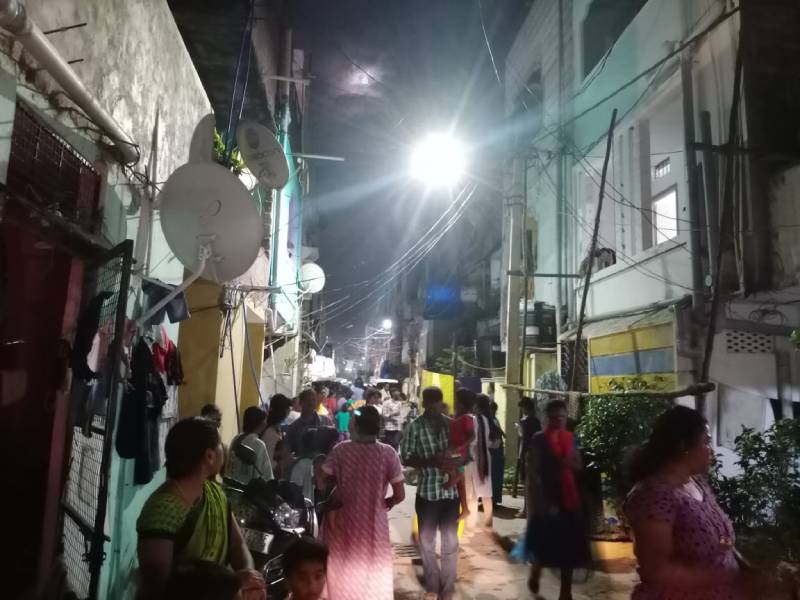Why is Borabanda recording tremors post monsoons?
By Newsmeter Network
Hyderabad: Scientists have concluded that loud sound like tremors in Hyderabad’s Borabanda area was the result of water percolating with intense pressure.
On the night of Gandhi Jayanti, the densely populated Borabanda recorded mild tremors measuring 1.5 on Richter scale. The first tremor was witnessed at 8.35 PM and the second at 11. 23 PM. Residents rushed out of their homes and assembled at open spaces.
This experience is not new to the people. Similar tremors were witnessed in 2017 during the same time of the year. It is pertinent to mention that on both occasions, tremors occurred post monsoons. In 2017 since tremors occurred during Diwali. However, residents mistook it as crackers, but as the magnitude increased people ran for cover.
Loud sounds from underground heard in #Borabanda of #Hyderabad. Citizens came on to the streets for cover. The sound is a result of ground water chanelling, officials said. @Director_EVDM on ground. pic.twitter.com/gFWh6o9waz
— @CoreenaSuares (@CoreenaSuares2) October 2, 2020
[amp-tweet tweetid="https://twitter.com/CoreenaSuares2/status/1312055490344620034"]
Borabanda is primarily a hilly terrain. It is densely populated and only a few households have pipeline connections. The area has undergone exhaustive drilling of borewells.
Scientist Srinagesh at National Geophysical Research Institute (NGRI) in Hyderabad said there are two aspects for tremors occurring in Borabanda. “In 2017 and 2020, Hyderabad received excessive rainfall.
According to data, this year monsoon was active for 82 days and with the result, twin cities received above-normal rainfall. And Tremors have occurred post monsoons,” he said.
Srinagesh noted that over the years Boranbanda being a rocky area developed fractures and voids. “Loud sound like tremor occurs when water percolates with intense pressure. Also, rocks have small pores and when water enters, it expands creating stress and triggers loud sounds. The phenomenon is called hydro seismicity. Minor tremors may continue in Borabanda. The rumbling sound depends on the rate of percolation and speed of the water. One should not look at it as a threat,” he said.
I urge people to not believe in the rumours that are being spread about tremors at Borabanda. We are monitoring the situation along with scientists from NGRI, officials from @GHMCOnline @Director_EVDM. Everybody is safe Kindly do not worry. @KTRTRS #Telangana #Hyderabad pic.twitter.com/ObnpzVyxvy
— Baba Fasiuddin (@Babafasiuddin) October 2, 2020
[amp-tweet tweetid="https://twitter.com/Babafasiuddin/status/1312075939514179586"]
Data revealed that during lockdown the number of mild tremors has increased. Close to 150 earthquakes, mostly micro, were recorded. Of them, 21 measured between 2.0 to 2.9 while the rest were between 0 and 2.0 on the scale.
“During the lockdown, we studied about microearthquakes in Hyderabad. No vehicular noise and other industrial activity help the instruments to record even 20 percent of the earthquakes,” Srinagesh said.
NGRI has 200 stations across the country.